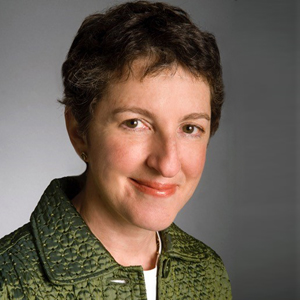Bringing Comfort to Unresponsive Patients

LINDA GOLDING
Lay Chaplain at New York
Presbyterian Hospital
The training students receive at JTS in clinical pastoral education is intense—and it needs to be. They will be asked to bring comfort to people experiencing all manner of crises, and they need to be prepared. Prepared to listen—prepared to be with them in their pain.
But what if the person they are asked to help is in intensive care or in hospice and is unresponsive or minimally responsive?
Meet Linda Golding, a board certified lay chaplain at New York Presbyterian Hospital who teaches students why it is important to be with these patients, and how to be with them. Linda herself studied at the Center and was the first lay chaplain to get training at JTS. She started teaching chaplains to provide care to non-responsive people some years ago when one of her students shared that he never went to the ICU because the people there don’t talk.
Though we don’t know how much unresponsive patients can understand what is happening to them, there is evidence they can hear. How much is not known. But being with someone, talking to them, reading to them, can help. These patients are so isolated, and chaplains can truly make a difference. As Linda notes, “Connecting with patients as the full human beings they are is an act of respect, an acknowledgment of dignity, a glimpse into what we might want for ourselves and our loved ones.”
Linda brings students into the hospital’s ICU, where they shadow nurses and other caregivers. This shadowing is valuable, she explains, because nurses are with these patients 12-hours a day. “We’re looking to find out how do they do it—what do they say, how are they caring for the patient?” The powerful connections that the students witness between the nurses and their patients often inspire them and help them recognize that a relationship with an unresponsive patient is possible.
After the shadowing, Linda and the students role play, with one person embodying the unresponsive patient and others playing family members or a nurse.
One of the goals of this training is to reduce the concern students have about visiting with someone in this condition so they can foster greater connection. Chaplains can then model for the family how to interact with their loved one. As a result of working with Linda, students feel empowered to go out into the world and use their new skills, more confident in their ability to bring comfort to all kinds of patients and families who need their help.



